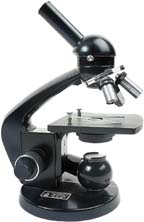New Understanding of Iron Absorption

Milk is not high in iron content. But researchers at the ARS U.S. Plant, Soil and Nutrition Research Laboratory in Ithaca, N.Y., have used a combination of human cell culture and separation techniques to reveal clues about the bioavailability of milk's iron.
To no one's surprise, the study found that there appear to be compounds in human milk that promote iron uptake. According to the study's lead scientist, identifying these compounds and gaining understanding of how they work may enable researchers to make other foods, such as staple food crops, more nutritious.
Noteworthy, however, was that one of the facilitating factors was not lactoferrin. For years, scientists have debated whether that protein's ability to bind and transport iron-and release it at specific receptor cells in the human intestine-actually enhances iron absorption.
Instead, the study found that it's the low-molecular-weight fractions of whey that promote uptake.
Looking for a reprint of this article?
From high-res PDFs to custom plaques, order your copy today!


